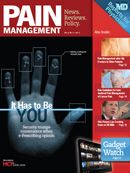State Laws Governing eRx of Controlled Substances
One major hurdle to e-prescribing of controlled substances is the fact that state laws differ.
One major hurdle to e-prescribing of controlled substances is the fact that state laws differ. Consulting firm Point of Care Partners reported that, through the first quarter of 2011, 32 states had laws that allowed electronic transmission of prescriptions for controlled substances as long as all parties followed federal regulations. That, of course, means that 18 states still prohibited EPCS, and others had restrictions to varying degrees.
According to POCP founder and Managing Partner Tony Schueth, pharmacists in Alabama and Montana must have a hard-copy prescription in hand before they can dispense a Schedule II controlled drug that was prescribed electronically. E-prescriptions for Schedules III through V were prohibited. Nebraska does not allow Schedule II e-prescriptions, and permits other controlled drugs in other schedules to be e-prescribed only if the order contains statespecific dispense-aswritten language.
But as with eprescribing of non-controlled drugs a few years back, states gradually are updating their antiquated rules to permit the practice. POCP reported that North Dakota approved EPCS at the end of 2010, and that 11 states had legislation pending as of February.
Historically, Texas has required physicians to file a written care plan for each prescription of controlled drugs, but a major breakthrough in this large state occurred in May, when both houses of the Texas Legislature unanimously approved a bill legalizing e-prescribing of controlled substances. At press time, the legislation was awaiting action by of Gov. Rick Perry. If Perry signs the bill, the changes would take effect September 1.
